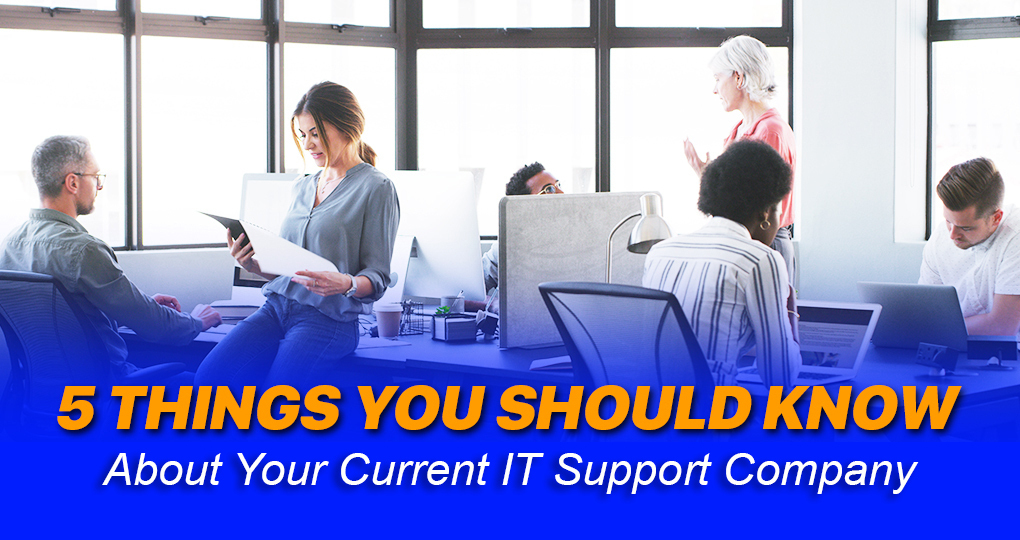The Role of Artificial Intelligence in Cybersecurity
As organizations strive to protect their sensitive data and maintain a robust security posture, the role of artificial intelligence (AI) in cybersecurity has emerged as a game-changer. AI-powered solutions offer a proactive and intelligent approach to identify, prevent, and mitigate cyber threats.
In this blog, we will explore the transformative potential of AI in cybersecurity and how businesses can leverage the expertise of IT companies to harness its power effectively.
5 Ways AI Is Changing Cybersecurity
Advanced Threat Detection
AI is revolutionizing business security by enabling advanced threat detection capabilities. Machine learning algorithms can analyze vast amounts of data, identify patterns, and detect anomalies that may indicate potential security breaches. This helps businesses proactively identify and respond to threats, minimizing the risk of data breaches and cyberattacks.
Behavioral Analytics
AI-powered behavioral analytics systems can monitor user behavior and identify deviations from normal patterns. By continuously learning and adapting to user behavior, these systems can detect suspicious activities, such as unauthorized access attempts or insider threats. This helps businesses detect and mitigate security risks in real-time, enhancing overall security posture.
Intelligent Authentication
AI is enhancing authentication processes by incorporating biometric technologies such as facial recognition, voice recognition, and fingerprint scanning. These advanced authentication methods provide stronger security measures compared to traditional passwords or PINs, reducing the risk of unauthorized access to sensitive business systems and data.
Automated Security Incident Response
AI-driven security solutions can automate the incident response process, enabling faster and more efficient threat mitigation. By leveraging machine learning algorithms, these systems can analyze security incidents, prioritize them based on severity, and initiate automated responses or recommendations for security teams to take immediate action.
Predictive Analytics for Risk Assessment
AI-powered predictive analytics can assess potential security risks by analyzing historical data, identifying trends, and predicting future threats. This helps businesses proactively address vulnerabilities, allocate resources effectively, and implement preventive measures to mitigate risks before they materialize.
What AI-Powered Cybersecurity Means For You
AI offers immense potential in enhancing cybersecurity by augmenting human capabilities, automating processes, and detecting and responding to threats in real-time.
With its ability to analyze vast amounts of data and identify patterns, AI can quickly identify anomalies and potential security breaches that may go unnoticed by traditional security systems. This proactive approach enables organizations to stay one step ahead of cybercriminals.
When it comes to selecting AI-powered cybersecurity solutions, it is essential to consider a few key factors. Firstly, the solution should have advanced machine learning algorithms that can continuously learn and adapt to new threats. This ensures that the system remains effective even as cyber threats evolve. Additionally, the solution should have robust data analytics capabilities to process and analyze large volumes of data efficiently.
Furthermore, the solution should integrate seamlessly with existing security infrastructure to provide a comprehensive defense mechanism. Compatibility with other security tools and systems allows for a holistic approach to cybersecurity, leveraging the strengths of both AI and human expertise.
It is also crucial to consider the reputation and track record of the AI solution provider. Look for established vendors with a proven history of delivering reliable and effective cybersecurity solutions. Consider factors such as their experience, customer reviews, and partnerships with industry-leading organizations.
Leveraging AI for cybersecurity is a matter of selecting the right solutions that are supported by AI capabilities. By choosing advanced AI-powered solutions with robust machine learning algorithms, data analytics capabilities, and seamless integration, organizations can enhance their cybersecurity posture and effectively combat ever-evolving cyber threats.
Don’t Overlook The Power Of AI
Overall, AI is transforming business security solutions and processes by providing advanced threat detection, behavioral analytics, intelligent authentication, automated incident response, and predictive risk assessment capabilities. These advancements empower businesses to stay one step ahead of cyber threats and protect their valuable assets.
As the cybersecurity landscape continues to evolve, businesses must stay one step ahead of malicious actors. Embracing the power of artificial intelligence in cybersecurity is no longer a luxury but a necessity.
By partnering with IT companies that specialize in AI-driven solutions, businesses can fortify their defenses, detect threats in real-time, and respond swiftly to mitigate potential damages. The future of cybersecurity lies in the hands of intelligent machines working in tandem with human expertise, and by harnessing this synergy, businesses can safeguard their digital assets and thrive in the face of ever-evolving cyber threats.
If you need expert assistance deploying or managing your AI-assisted security measures, reach out to our team.
The Growing Significance of Endpoint Security
5 Reasons You Can’t Overlook Endpoint Security
Protection Against Malware
Data Loss Prevention
Mitigating Insider Threats
Safeguarding Remote Workforce
Compliance and Regulatory Requirements
How To Select Your Endpoint Security
Evaluate Comprehensive Protection
- Real-time threat detection
- Advanced malware protection
- Firewall capabilities
- Data encryption
Consider Scalability and Compatibility
Prioritize User-Friendliness
Assess Performance and Resource Impact
Don’t Let Your Unsecured Endpoints Put You At Risk
The Role of Artificial Intelligence in Cybersecurity
5 Ways AI Is Changing Cybersecurity
Advanced Threat Detection
Behavioral Analytics
Intelligent Authentication
Automated Security Incident Response
Predictive Analytics for Risk Assessment
What AI-Powered Cybersecurity Means For You
Don’t Overlook The Power Of AI
The Complicated Process Of Qualifying For Cybersecurity Insurance

15 Questions Your Cybersecurity Insurance Carrier Is Going To Ask…
- Does your business have a policy against opening unverified email attachments?
- Does your business use an Endpoint Detection & Response (EDR) solution?
- Does your business test cybersecurity standards with regular vulnerability scans?
- How many users have local administrator rights enabled?
- Do you have a content filtering solution?
- Does your business monitor traffic into and out of the network?
- Do you have recent and tested backups of all mission-critical data, applications, and configurations?
- Are your offsite backups protected by an air-gap and separate authentication mechanism?
- Is your cloud data backed up?
- Can staff members access business email on their personal devices?
- Do you have an email encryption solution in place?
- Is your staff regularly tested and trained on phishing and other social engineering attack vectors?
- Do you have a Security Incident and Event Management (SIEM) system in place?
- Do you have an update and patch management system in place?
- Do you work with a third-party IT company?
3 Steps To Qualifying For Cybersecurity Insurance
Assess your infrastructure
Remediate your vulnerabilities and risks
Continually reassess
How We Help Our Clients Qualify For Cybersecurity Insurance
Need Help Qualifying For Cybersecurity Insurance?
Why You Can’t Ignore Cybersecurity Insurance Any Longer

What You Should Know About Cybersecurity Insurance
- The global market for cybersecurity insurance was USD $7.60 billion in 2021 and is expected to grow to USD 20.43 billion by 2027
- In the past three years, cyber insurance claims have increased by an order of 100% and payouts by a total of 200%
Types of Cybersecurity Insurance
Breach and event response coverage
Regulatory coverage
Liability coverage
Privacy liability
Security liability
Multimedia liability
Cyber extortion
Will Cybersecurity Insurance Completely Protect Your Business Against Cybercrime?
- Coverage is limited to attacks and fails to address human error
- Claims are limited to losses that result directly from network interruption, and not the entire period of business disruption
- Claims related to third-party contractors and outsourced service providers are almost always denied
We’ll Assist With Your Cybersecurity Insurance Needs
5 Things You Should Know About Your Current (Or Next) IT Support Company
In today’s tech-dependant world, businesses heavily rely on IT companies to support their operations and drive growth. However, it’s not enough to simply hire an IT company based on their reputation or services alone. To truly maximize the benefits of IT support, it is crucial to know your IT company on a deeper level.

Here’s a secret: IT professionals agree that you can tell how good a client is going to be by the questions they ask. So, whether you’re looking at new IT companies or still getting to know the one you’re with right now, make sure you get the answers you need to better understand what you’re paying for.

5 Questions You Need The Answers To
Does your IT company understand your strategy?
Understanding your business strategy enables the IT company to align their services with your goals and objectives. By having a clear understanding of your strategic direction, they can tailor their IT solutions to support your specific needs. Whether it’s expanding into new markets, implementing innovative technologies, or streamlining operations, an IT company that fully comprehends your business strategy can provide strategic guidance and implement solutions that drive your success.
An IT company that understands your business strategy can act as a trusted advisor. They can offer valuable insights and recommendations on how technology can be leveraged to achieve your strategic objectives.
By staying informed about your business goals, they can proactively identify opportunities for improvement, suggest innovative solutions, and help you stay ahead of the competition. This partnership fosters a collaborative environment where the IT company becomes an integral part of your business strategy, working together towards shared success.
When an IT company understands your business strategy, they can effectively support your initiatives, scale their services, and onboard new users during mergers or acquisitions. They can align their solutions with your goals, provide strategic guidance, and act as a trusted advisor. This level of understanding and collaboration ensures that technology becomes an enabler for your business strategy, driving growth and success.
What’s your IT company’s 5-year plan?
This is a simple concept, but it’s almost always overlooked by IT clients. Have you ever asked your IT company what their macro business plan is?
You may be surprised by what you find out. Some companies are simply seeking more and more clients in order to grow their value and seek a buyout. Others are looking to rapidly expand and diversify. Often, the IT company’s business plan, if realized, can affect the quality of service the clients receive.
Make sure to keep this in mind, and keep an eye on your IT company as they grow and develop. It may give you insight into changes in service quality, or potential new offering they may be able to make available to you.
How do they handle renewal/termination of service?
Always have an exit strategy—there’s a chance that you’ll find managed services in general, or that IT company, in particular, isn’t right for you. Or, the opposite could happen: you’ll be perfectly satisfied with the services and will want to renew them.
That’s why it’s smart to know how the renewal/termination process will work ahead of time:
- Should the managed services contract terminate, does it require a monthly or annual renewal?
- Will you incur any penalties for ending your service before the expiration date?
- What is considered acceptable, in the contract, for the IT company to cancel the agreement on their end?
What is their track record?
Whether this is a new IT company you’re considering or your current partner, it’s important to look at their capabilities in the most exact terms available.
- Do they have KPIs, benchmarks, score cards, or other qualitative trackers available for review?
- What is their CSAT, and how has it changed over time?
- What stats can they provide on your service ticket resolutions over the past quarter?
What do their other clients say?
No matter how great a company may seem, remember that you can’t take their word for it; or, not entirely. It’s important to seek testimonials and case studies about a potential partner before you sign on the dotted line.
Furthermore, where available, it’s a good idea to talk to other clients of your current IT company. Whether it’s a peer group, a monthly happy hour get-together, or an annual appreciation client social, this is a great opportunity to find out how other clients are benefitting from the company’s IT services and whether you could change your approach to service usage.
It’s Never Too Late To Know More
The bottom line is that you should always be striving to make better use of the investment you’ve made in IT services. A lazy IT company loves a disengaged client that pays them hundreds or thousands a month just for the occasional password reset or workstation installation. The more you pay attention, the better ROI you’ll get.
3 Ways To Be A Better IT Client
IT blogs are usually about determining the pedigree of a given IT company. What do they offer? How do they perform? What makes them different?

It’s easy to overlook your role in the process. Here’s the hard truth: you may not be getting the best ROI for your monthly fees in IT support, and part of the problem might be you.
If you want to be a better IT client and maximize the return you get on your investment in IT services, make sure to keep the following three best practices in mind.

3 Best Practices For Ideal IT Clients
Are you doing your homework?
Ideally your IT company will take care of 99% of the work involved with maintaining and optimizing your IT environment. However, from time to time, you may have to perform a task here and there.
This is especially important at the very beginning when you are being onboarded. You generally have to fill out a lot of documentation to capture critical information such as passwords, domains, licenses, etc.
Did you keep up with that homework? Even if your onboarding period is long past, are there still questions you haven’t answered?
It’s important to keep in mind that this may allow your IT company to justify a lower quality of service, or otherwise impede them in critical situations. Without all that information, they won’t be able to do their jobs as effectively as they’d like to. That’s why you need to be sure you’ve done everything you’re supposed to, and can let your IT company work the way they need to.
Are you using all of their available services?
By fully engaging with the services they are paying for, you can unlock the full potential of your IT investments. IT companies offer a wide range of solutions beyond the help desk, such as IT consulting, managed services, cloud solutions, cybersecurity, and more. Each of these services is designed to address specific business needs and challenges, providing tailored solutions that can drive growth and efficiency.
Engaging with a broader range of IT services allows you to access customized solutions that align with their unique business goals. While the helpdesk provides immediate support for technical issues, other services can offer strategic guidance, proactive monitoring, and long-term planning. By leveraging these additional solutions, you can optimize your IT infrastructure, enhance security measures, and align technology with their overall business strategy.
Furthermore, technology is constantly evolving, and businesses need to stay ahead of the curve to remain competitive. By fully engaging with IT services, you can tap into the expertise and knowledge of IT professionals who are up-to-date with the latest industry trends and advancements. This enables businesses to leverage emerging technologies, implement innovative solutions, and gain a competitive edge in their respective markets.
Who is your point of contact?
It sounds simple, but we’ve had a lot of clients that can’t answer this question. Sure, you may have the direct number for the CEO of your IT company, but is that the most efficient way to get the help you need?
Probably not. More likely, your IT company has assigned a staff member as your point of contact. If you’re circumventing this person, whether out of convenience or otherwise, you’re likely adding minutes or even hours to the support process.
The point is that if you engage with your IT company in the way that’s dictated by their core processes, everything will function more smoothly.
Don’t Be A Bad IT Client
Fully engaging with the services provided by IT companies is essential for you to maximize the value of your IT investments. By going beyond the help desk and exploring the full range of solutions available, you can unlock tailored solutions, stay ahead of the curve, maximize efficiency, and proactively address potential challenges.
Embracing a holistic approach to IT services enables businesses to leverage technology as a strategic asset, driving growth, and achieving long-term success in today’s digital landscape.
5 Things You Should Know About Your Current IT Support Company

5 Questions You Need The Answers To
Does The Miller Group understand your strategy?
What’s Our 5-year plan?
How do we handle renewal/termination of service?
- Should the managed services contract terminate, or does it require a monthly or annual renewal?
- Will you incur any penalties for ending your service before the expiration date?
- What is considered acceptable, in the contract, for us to cancel the agreement on our end?
What is their track record?
- Do they have KPIs, benchmarks, scorecards, or other qualitative trackers available for review?
- What is their CSAT, and how has it changed over time?
- What stats can they provide on your service ticket resolutions over the past quarter?
What do our other clients say?
It’s Never Too Late To Know More
3 Ways To Be A Better IT Client





